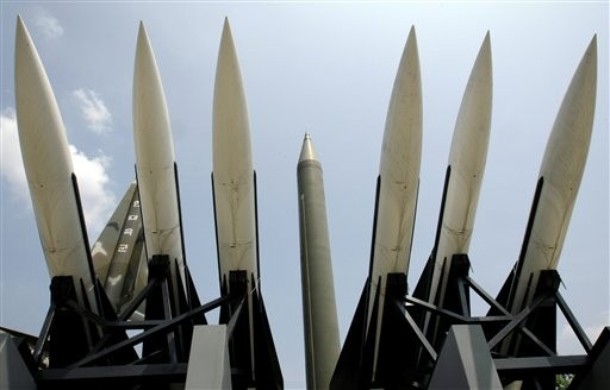
The Pentagon is deploying new missile defense systems in the region.
The U.S. is planning to significantly strengthen its missile defense system in the Asia-Pacific region. The Pentagon assures us that this will allow for a more effective response to possible threats from North Korea. But experts are convinced that first and foremost, the expansion of missile defense is motivated by the U.S.’s desire to prevent the “regional hegemony” of China.
The ambitious plan, the details of which were made public through the well-known newspaper The Wall Street Journal, involves the deployment of an American early-warning radar system in Japanese territory. Its location has not yet been determined, but it is clear that in order to increase the effectiveness of the entire system, the radar will be deployed on one of the southern islands of Japan—the first, deployed in 2006, operates in the north of the country, in the prefecture of Aomori. Furthermore, Washington is planning to deploy another radar station somewhere in Southeast Asia (presumably in the Philippines), although talks on this issue are still in the early stages. In addition, the Pentagon is ready to increase the quantity of mobile land-based anti-ballistic missile complexes (THAAD), as well as missile-equipped warships, from the current 26 to 36 units, 60 percent of which will be based specifically in the Asia-Pacific region.
This initiative of the Pentagon falls within the framework of the U.S.’s geostrategic reorientation toward the Pacific, which includes a military dimension. U.S. authorities themselves insist that one of the aims of strengthening their military presence in Asia is to increase readiness for a North Korean provocation. Pyongyang regularly issues harsh statements against South Korea and the West, calling them enemies. And the North Koreans are continuing to develop their own space program. Their most recent long-range missile test took place in April 2012 and ended in failure: Unha-3 (Milky Way-3) broke apart in the air approximately a minute after launch. Incidentally, that launch was also supervised by American experts on a floating radar station that had been urgently transferred closer to Japan from a base in Pearl Harbor.
Meanwhile, as stated by Dmitri Trenin, director of the Carnegie Moscow Center, the real reason for the U.S. action in the Asia-Pacific region is the strengthening of China, “although the Americans will never admit it.” “Beijing has risen to the point that the U.S. has simply been forced to place this issue at the top of their long-term strategic priorities,”* said the expert. Washington is particularly concerned by the continual militarization of China: It is expected that by 2015, China’s military budget will be twice as large as it was in 2011, and its total defense spending will exceed that of all other Asia-Pacific countries.
Another cause for alarm for the U.S. is Beijing’s rising number of rockets of various types (more than 1.6 million aimed at Taiwan alone), in addition to Beijing’s rigid stance regarding the disputed islands of the South China Sea (see articles published by Kommersant on Aug. 3, 8, and 20). “You cannot say that the U.S. is enacting policies in Asia that are directed against China. But they are doing their best to maintain the current balance, which would prevent the possibility of Beijing’s transformation into a regional hegemony,”* said Trenin.
So far, the Chinese authorities have declined to comment on the U.S.’s new plans, calling on all interested parties to avoid a situation in which “one country attempts to put its own national security above the interests of all other players.” But it is nonetheless obvious that it would be impossible for the increase in U.S. activity not to worry Beijing.
Moscow is also attentively monitoring Washington’s actions in the Pacific Rim. Back in the spring, during a visit to Japan, Russian Deputy Foreign Minister Sergei Ryabkov warned that “the various elements of U.S. missile defense are gradually being arranged into a global system, and that is a serious cause for concern for Russia.”*
However, Trenin urges us not to overly dramatize the situation. “In Russia, there is a tendency to assume that all American plans are directed against us. However, today the U.S. does not consider Russia a serious rival, and sees little potential in Russia,” suggests the expert, imploring Moscow to focus on “finding its own path towards relations with countries in the region.”
*Editor’s note: This quote, while accurately translated, could not be verified.

Leave a Reply
You must be logged in to post a comment.